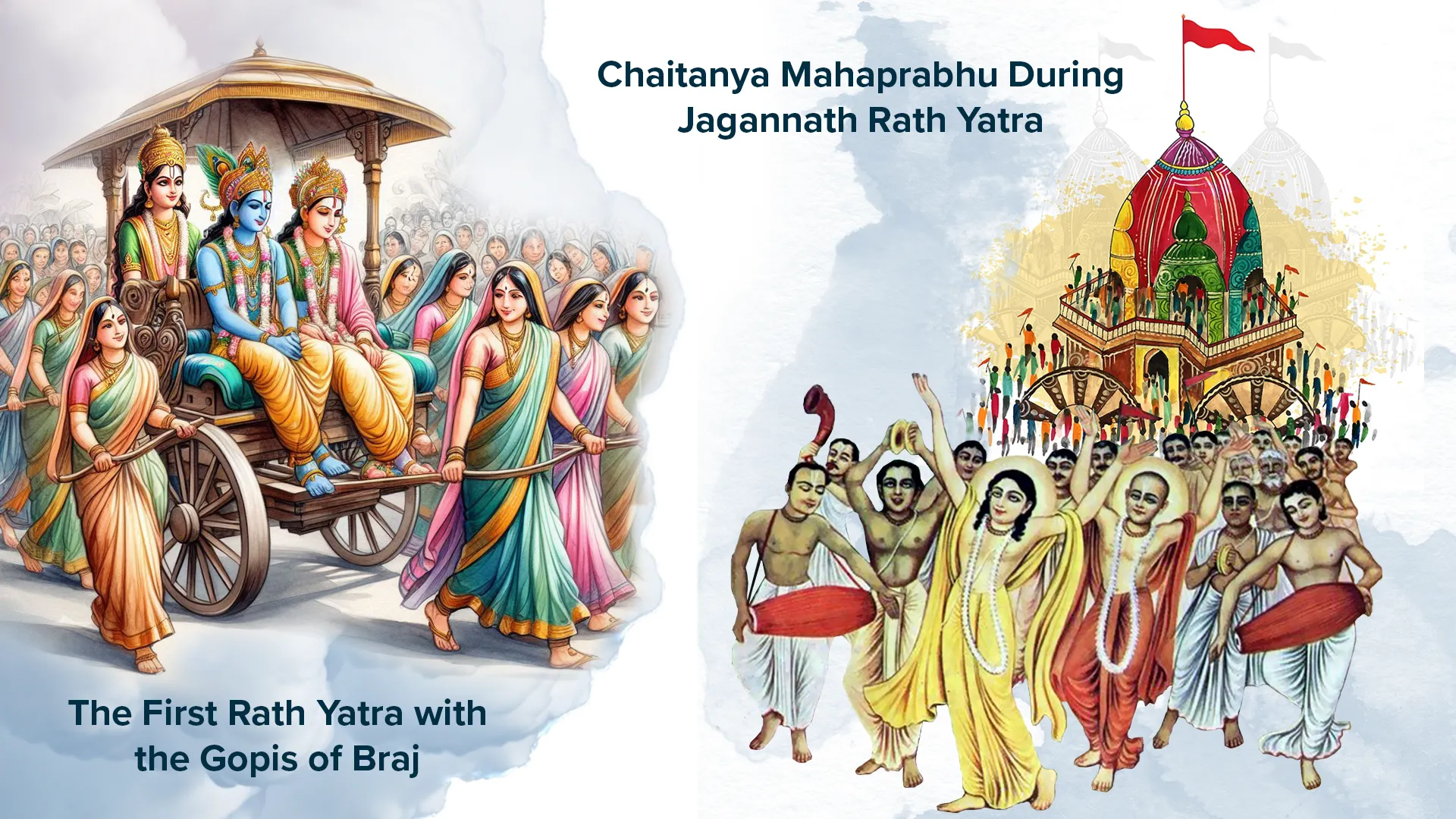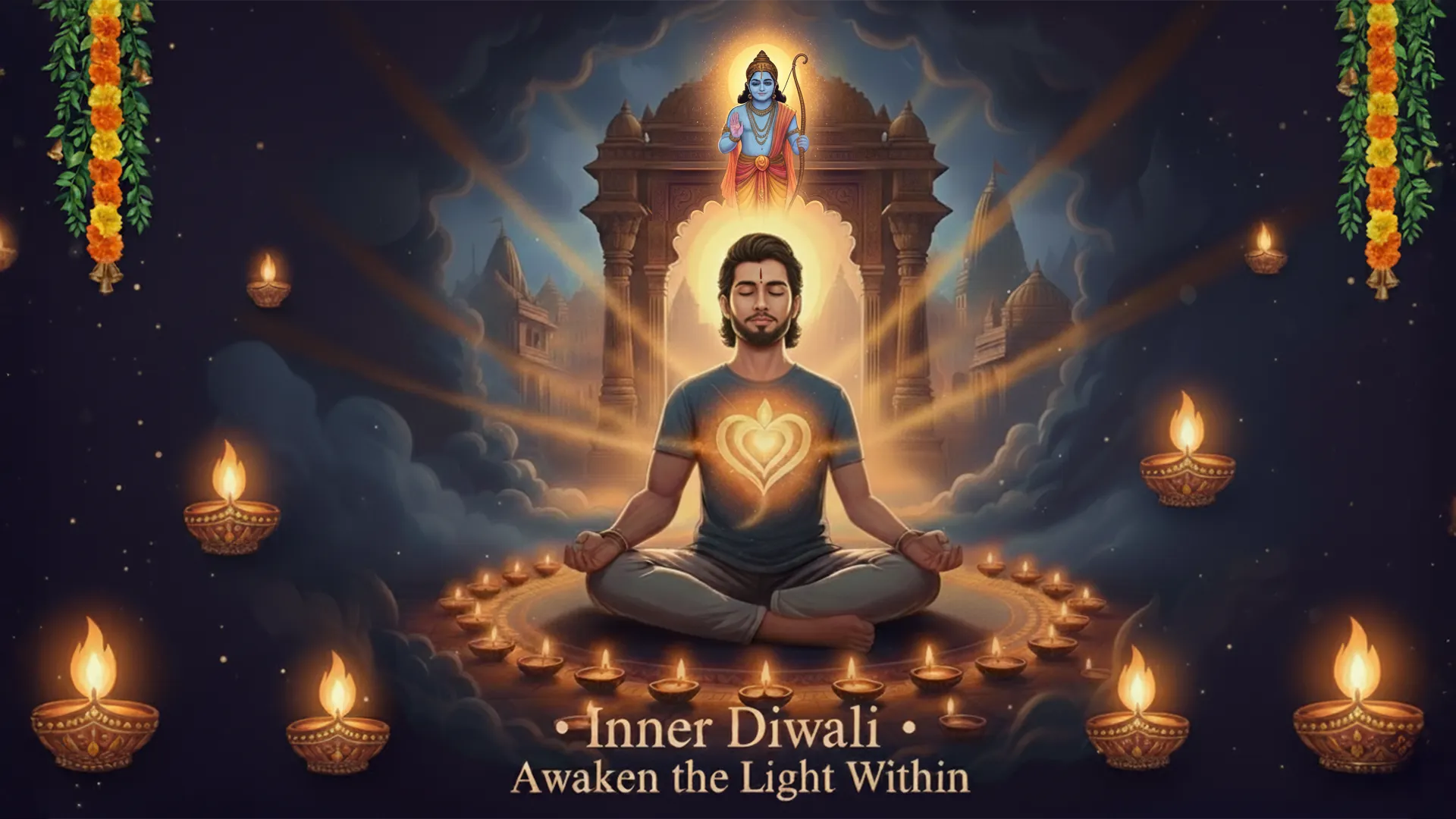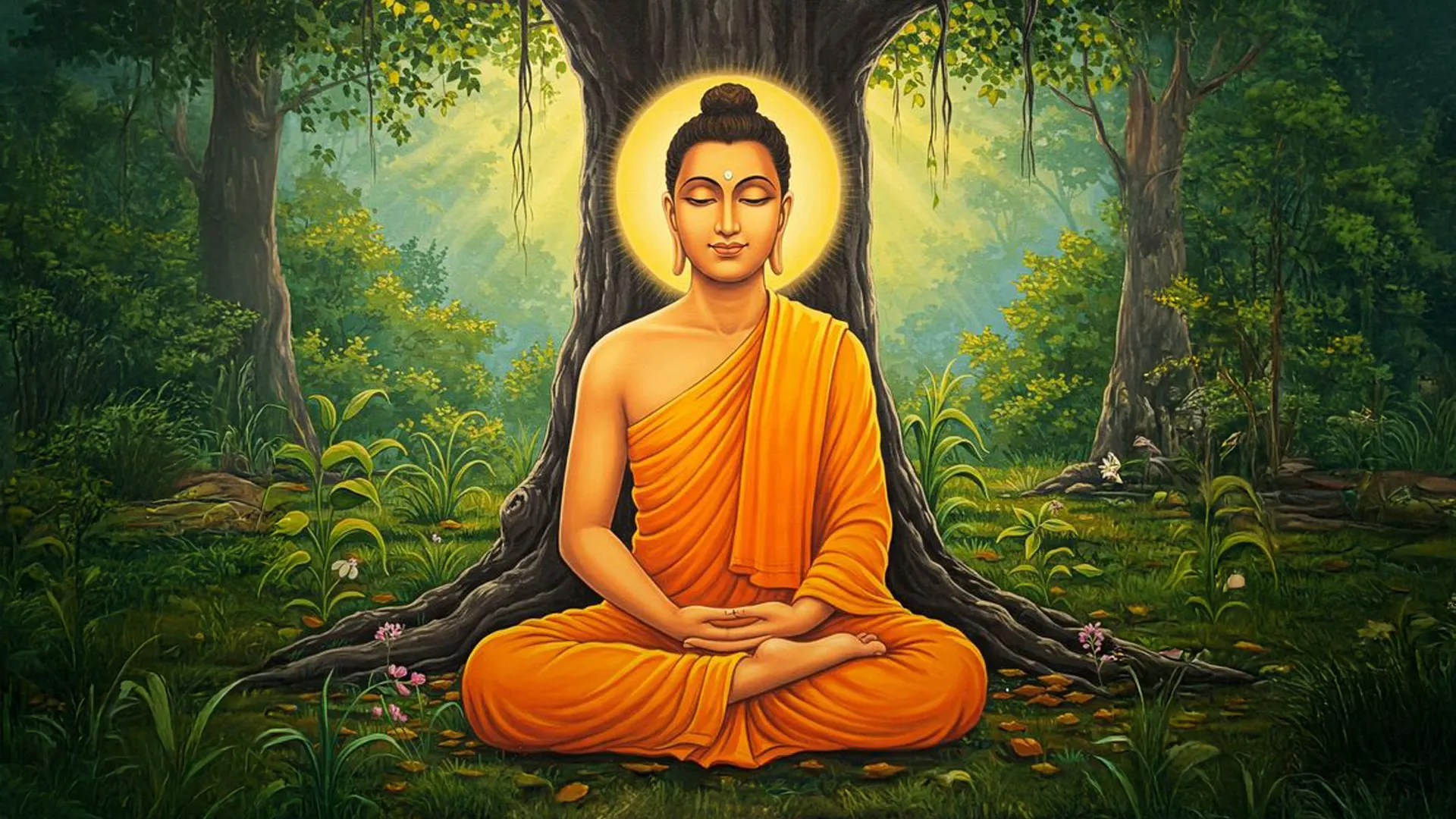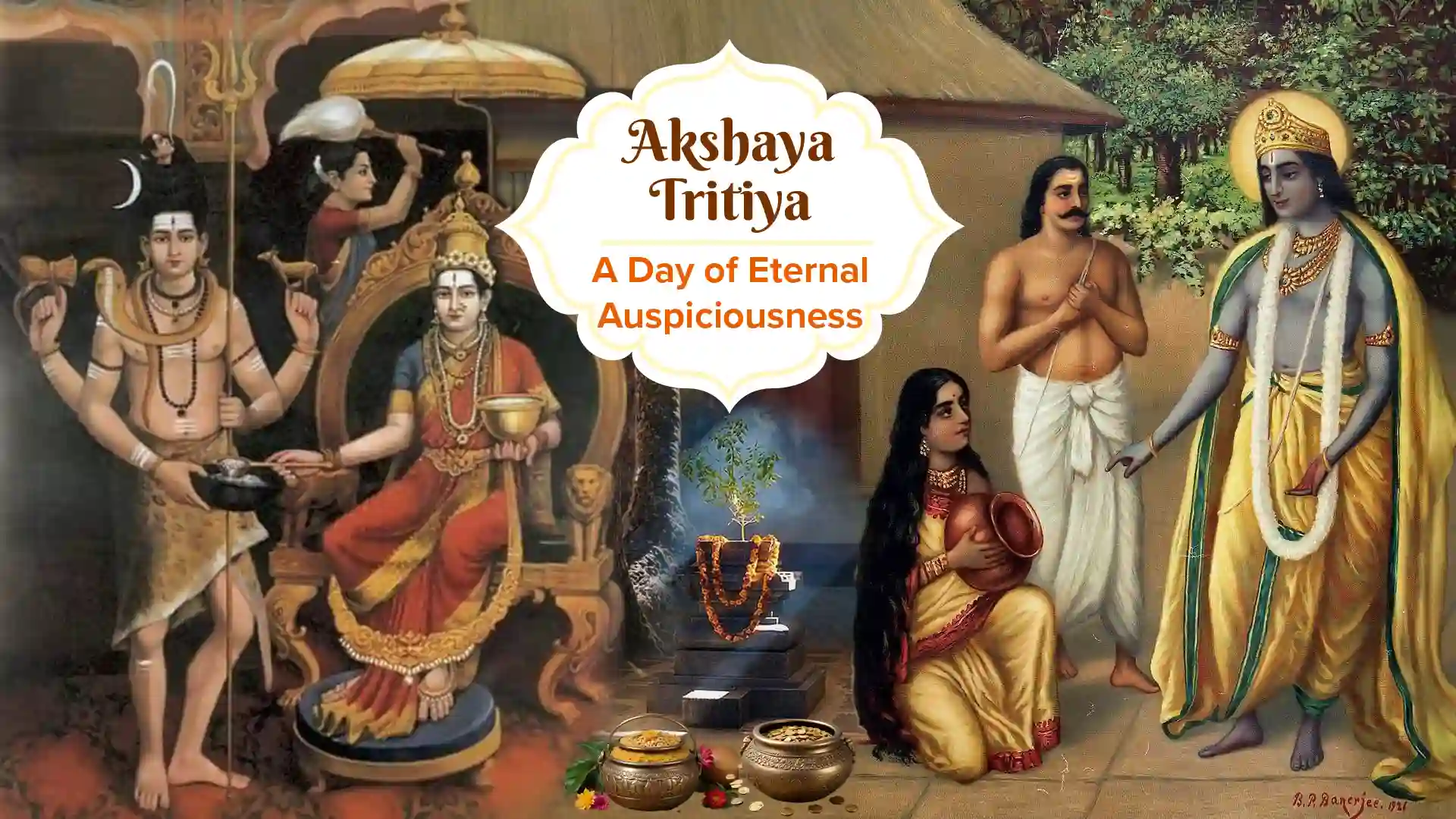Rath Yatra, also known as the Chariot Festival, is not just a cultural event, but a deeply spiritual journey that resonates with the hearts of millions of devotees. It commemorates the annual journey of Bhagwan Jagannath, along with his siblings, Shree Balabhadra and Devi Subhadra, from the Jagannath Temple to the Gundicha Temple in Puri, Odisha. Let us delve into the festival's profound spiritual significance and explore the enchanting leelas associated with it, as narrated by Swami Mukundananda.
The History of Rath Yatra
The tradition of Rath Yatra, with its roots deeply embedded in ancient times, can be traced back through Hindu scriptures and legends. This vibrant festival is dedicated to Bhagwan Jagannath, a manifestation of Shree Krishna along with His siblings, Balaram and Devi Subhadra. According to legend, the deities yearn to visit their birthplace, the Gundicha Temple, each year, prompting the magnificent procession.
Rath Yatra and the Divine Leela of Shree Krishna and the Gopis of Braj
The significance of Rath Yatra resonates profoundly with the devout sentiments associated with bhagwan Shree Krishna's divine play with the Gopis of Braj. While the contemporary observance of the Rath Yatra is widely recognised across India and globally, the origins of the very first Rath Yatra in human history remain relatively obscure.
Shree Krishna's departure from Vrindavan, also known as Braj, causes Radharani and the Gopis to endure the heart-wrenching agony of separation for a century, despite His profound affection for them. Though physically apart, their minds remain constantly connected to Krishna, and their love grows even more intense and selfless. This divine parting only deepens their unconditional love, purifying it to an unimaginable extent. After a century of yearning and devotion, the Gopis finally experience the bliss of divine love upon reuniting with their beloved Shree Krishna, their hearts overflowing with indescribable joy.
During a solar eclipse, a multitude of devotees gather at Brahma Lake near Kurukshetra to bathe in the Kund (pool), believing it to be as auspicious as conducting an Ashwamedh Yagya. Shree Krishna, accompanied by His 16,108 queens and other Yadus, also visits Brahma Kund. Radharani and the Gopis journey from Braj to the lake as well. Upon seeing Shree Krishna after a century, their joy is boundless. However, they do not feel the same sweet, divine bliss upon seeing Him as the wealthy King of Dwarka. They ask Him to return to Braj so they can relish the Braj Ras in His loving form as their beloved Shyamsunder. Shree Krishna, empathising with their desire, agrees.
The Gopis construct a chariot carrying Shree Krishna, Balaram, and Subhadra and lovingly pull it from Kurukshetra to Braj. Witnessing the Gopis' selfless love and intense devotion, Shree Krishna transcends into Mahabhav Samadhi, experiencing divine ecstatic bliss. His profound inner state is reflected in His dilated eyes and motionless body. Inspired by His divine state, Balaram and Subhadra also enter Mahabhav Samadhi.
When the chariot rolls into Braj, all the locals are over the moon to reunite with their beloved Shyamsunder. There, Shree Krishna ditches His regal look to become a buddy, a kiddo, and a sweetheart, spreading pure happiness all around.
Chaitanya Mahaprabhu: Embodying Radha's Love in Rath Yatra
As beautifully described by Swami Mukundananda, once, Shree Krishna finds Himself deeply intrigued by Radha's profound love for Him. He ponders, "What is the nature of Radha's love? How can I comprehend it?" Krishna thinks that if He could become Radha, He would inherit Her love and finally understand the devotion She holds for Him. He also wonders what about Him draws Radha's unwavering attention.
"Krishna, Krishna, Krishna" and "Shyam, Shyam, Shyam" echo from every pore of Her being. He questions what joy She finds in Her devotion to Him. With these curiosities stirring within Him, Krishna decides to take on a new form. Unable to transform into Radha during His divine pastimes, He chooses to descend as His own greatest devotee, embodying Radha's sentiments. This is how He becomes Chaitanya Mahaprabhu.
In Puri, where Chaitanya Mahaprabhu chooses to reside, the timeless tradition of Rath Yatra is held every year with great pomp and reverence. Bhagwan Jagannath graces the grand chariots with Baladev and Subhadra. Pulled lovingly by throngs of devoted souls over three kilometres to Gundicha Mandir, also known as Mausima Mandir, this procession is not just a spectacle, but a profound display of spiritual fervour and divine union.
Chaitanya Mahaprabhu beholds Bhagwan Jagannath not just as an idol but as His beloved Krishna incarnate. He yearns for Jagannath's divine presence and visits the temple but looks at the divine deities from afar, cautious not to approach too closely lest his discerning eye might find imperfections that could cloud His pure devotion. Such is his longing that when he reverently touches the temple's stone doorframe, the intense heat of his love melts the stone, leaving lasting fingerprints that still bear witness to his divine bhav in Puri today.
Before Rath Yatra commences, a sacred interlude unfolds when bhagwan Jagannath 'falls sick', and the temple closes for 15 days for the devotees. During this time, Chaitanya Mahaprabhu keenly feels the ache of separation. He pilgrimages to Allarnath, 18 kilometres distant, and lies in deep yearning. His love is so intense that the very stone beneath him melts, a testament to his fervent devotion that endures through the ages.
When the temple doors finally open, the anticipation is palpable as Shree Jagannath emerges. Chaitanya Mahaprabhu meticulously organises his devotees into groups for the grand procession. He assigns roles for the mridangam players, singers, and followers, ensuring every moment is a symphony of devotion and celebration.
As the chariots set forth, devotees dance in ecstatic abandon, and Mahaprabhu, filled with divine fervour, dances at the heart of it all. His dance is not just a physical expression but a re-enactment of divine love, evoking the spirit of Radha and guiding Krishna back to Vrindavan. In his heart, Mahaprabhu feels the tender joy of Radha. The same joy guides the Gopis as they bring Krishna, Balaram, and Subhadra from Kurukshetra to Braj, an act imbued with the divine sentiment of reunion and love.
His passionate dance before the chariot elevates the Rath Yatra to new heights of spiritual glory. Today, cities across the globe are inspired by Mahaprabhu's devotion, celebrating Rath Yatra with reverence for not only Bhagwan Jagannath but also Radha Krishna, Sita Ram, and countless other divine forms.
The Significance of Rath Yatra
Rath Yatra holds profound spiritual significance for devotees. It symbolises life's journey, with the movement of the divine chariots representing the soul's pilgrimage towards liberation. Pulling the chariots is seen as a way to earn divine blessings and cleanse one's sins. The festival also reminds of the divine's accessibility, as Bhagwan Jagannath and his siblings come out of their sanctum to be among their devotees.
The Grand Celebration of Jagannath Rath Yatra
The preparations for Rath Yatra begin months in advance. The construction of the massive wooden chariots is a meticulous process carried out by skilled craftsmen. Each chariot has its unique design and significance:
- Nandighosa: The chariot of Bhagwan Jagannath, adorned in yellow and red.
- Taladhwaja: The chariot of Shree Balabhadra is decorated in blue and red.
- Darpadalana: The chariot of Devi Subhadra, embellished in black and red.
On the festival day, the deities are ceremoniously brought out of the Jagannath Temple and placed on their chariots. Amidst chants, devotional songs, and drumbeats, thousands of devotees pull the chariots along the Bada Danda (Grand Road) to the Gundicha Temple, about 3 kilometres away. This journey, known as the Pahandi, is a mesmerising spectacle of devotion and energy.
The deities remain at the Gundicha Temple for a week, then return to the Jagannath Temple in a similar grand procession, Bahuda Yatra. The return journey is equally captivating and marks the end of the festival.
Rath Yatra is more than just a festival; it is a vibrant expression of faith, devotion, and cultural heritage. It brings people together, transcending religion, caste, creed, and nationality barriers, united in their love for Bhagwan Jagannath. Whether you are a devout follower or a curious traveller, experiencing Rath Yatra is a spiritual awakening and cultural immersion journey. As the chariots roll through the streets, they carry the timeless message of love, unity, and the eternal bond between the Bhakt and the Bhagwan.









What our Participants say